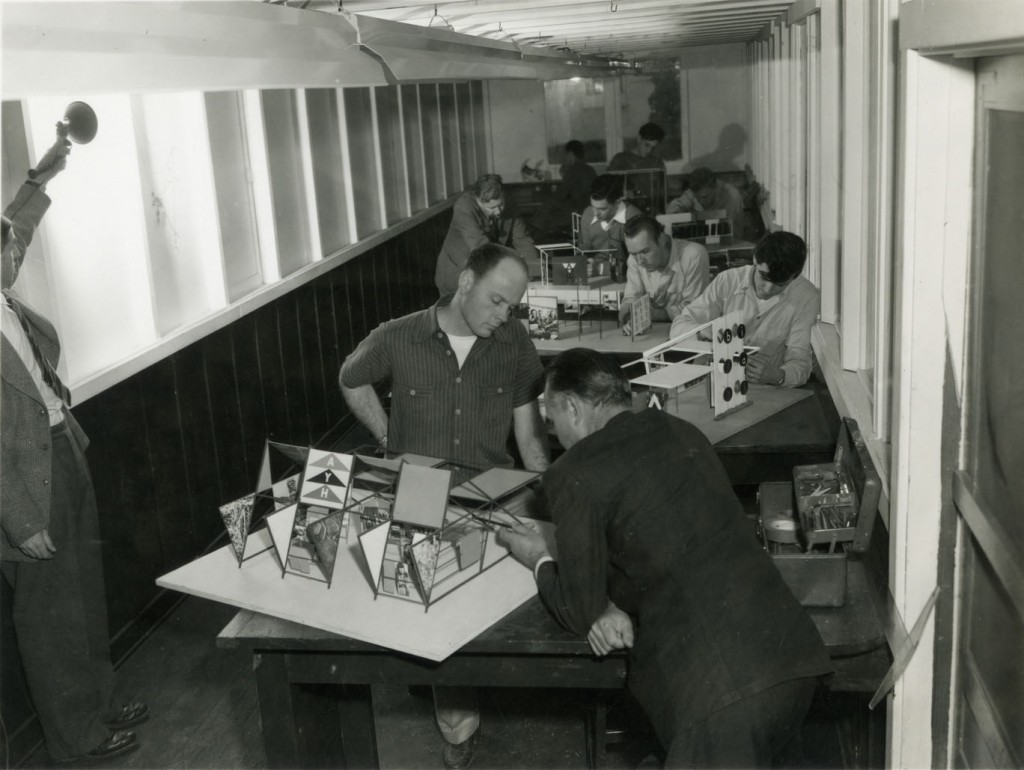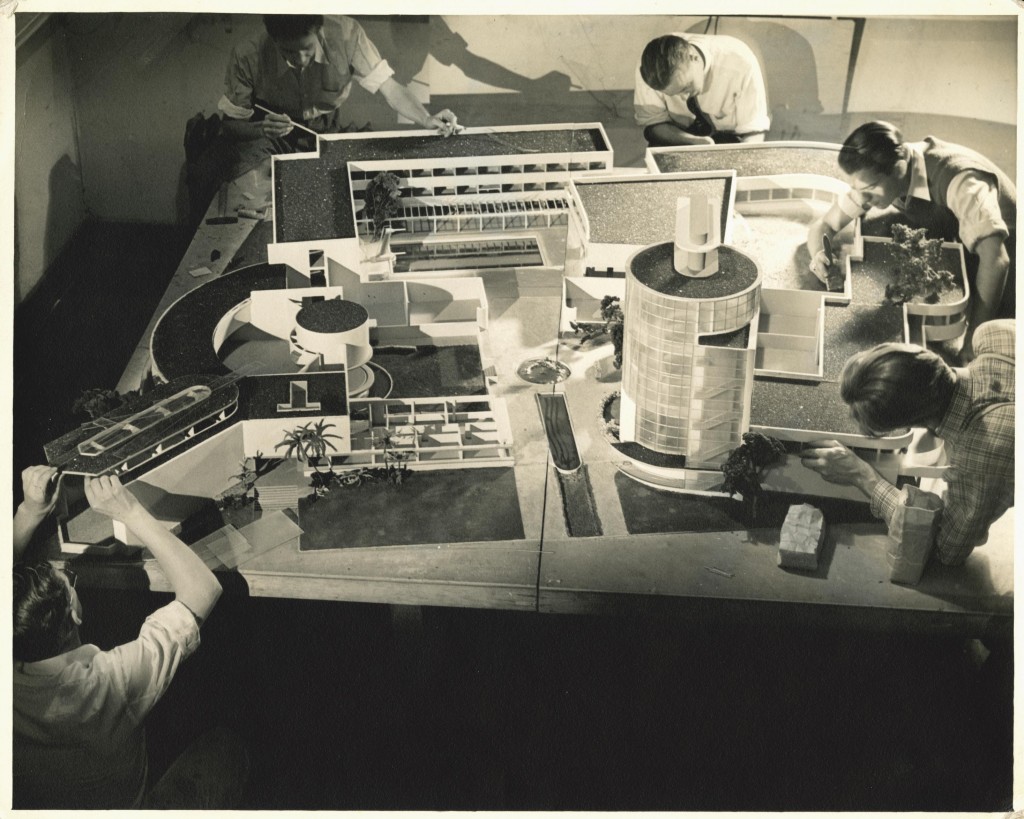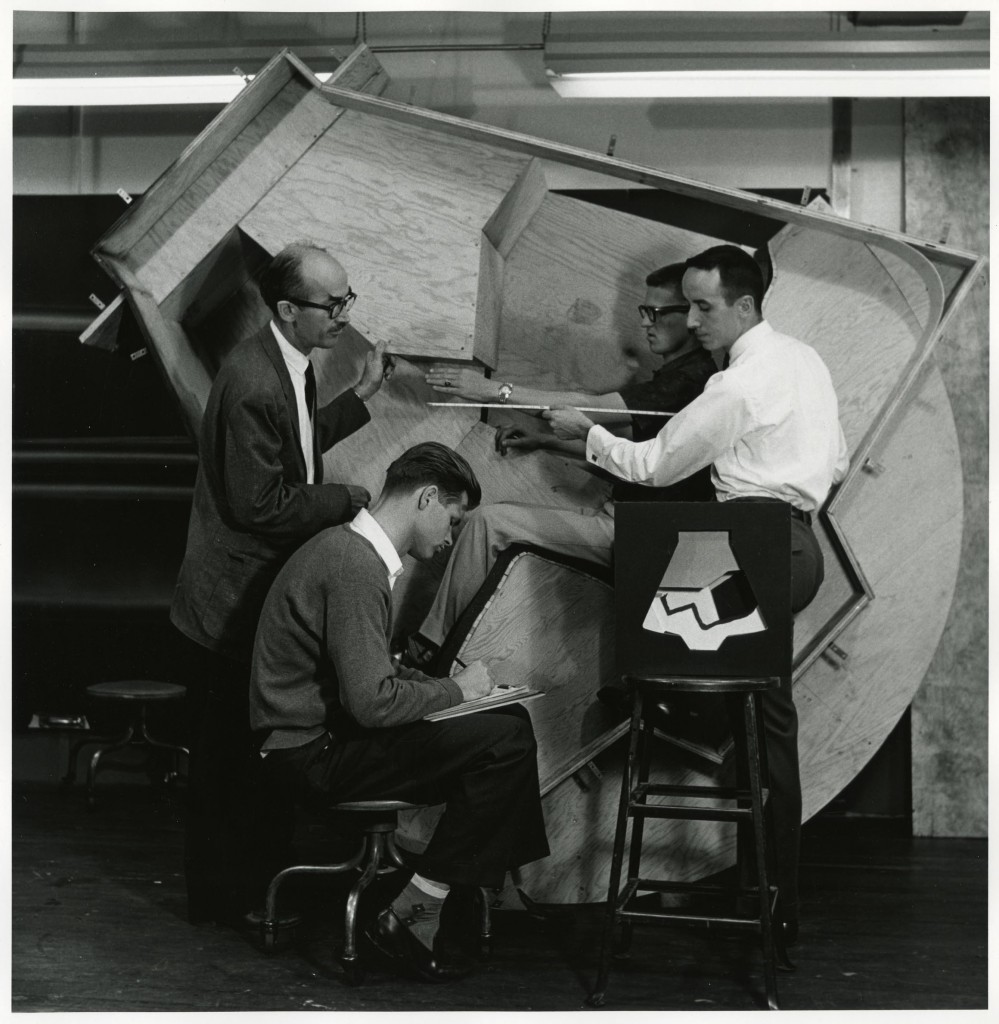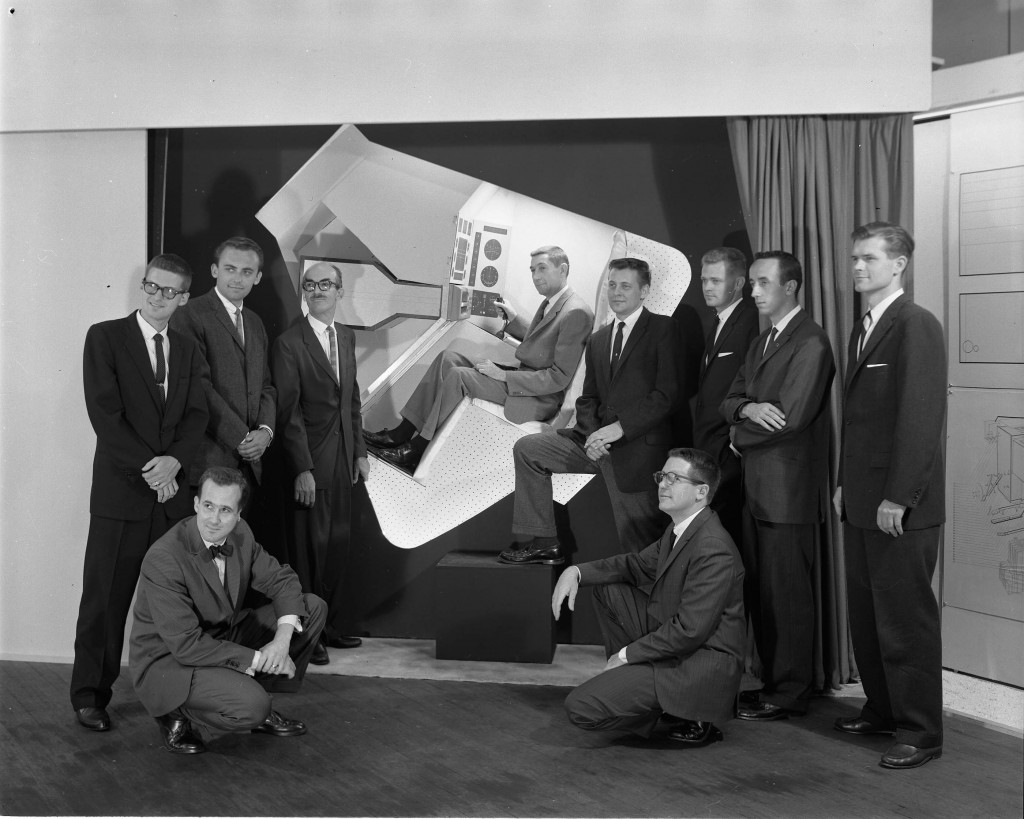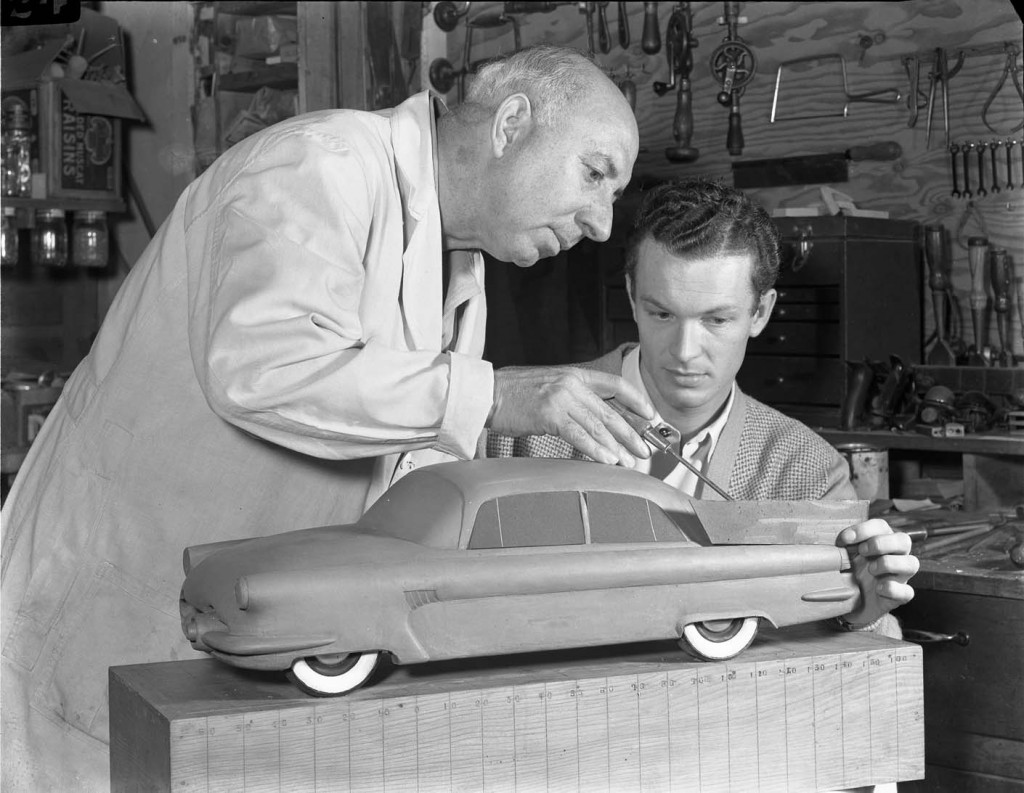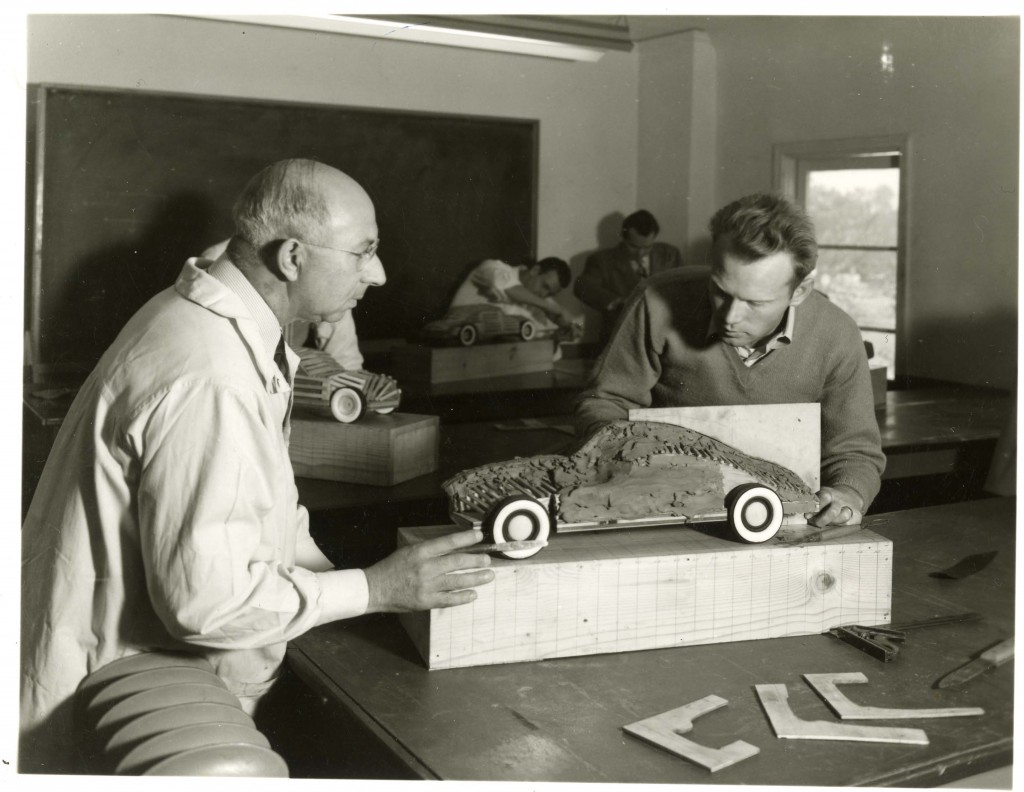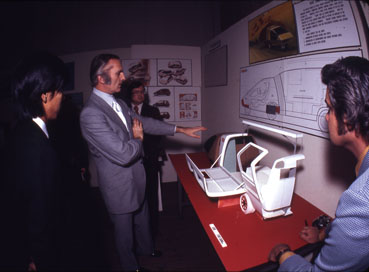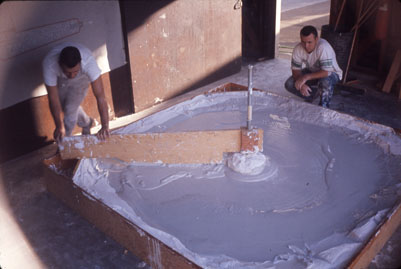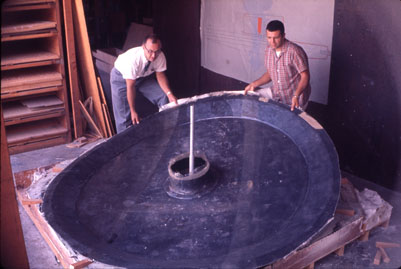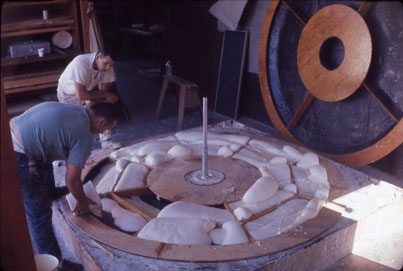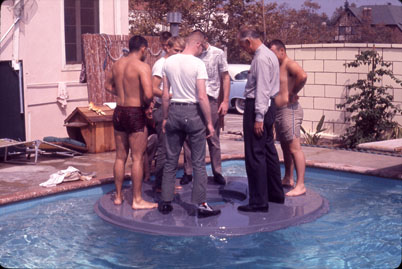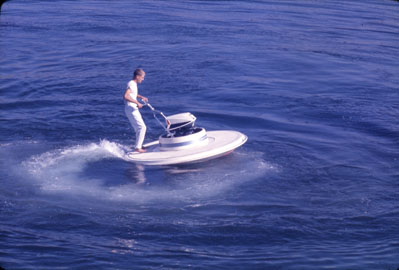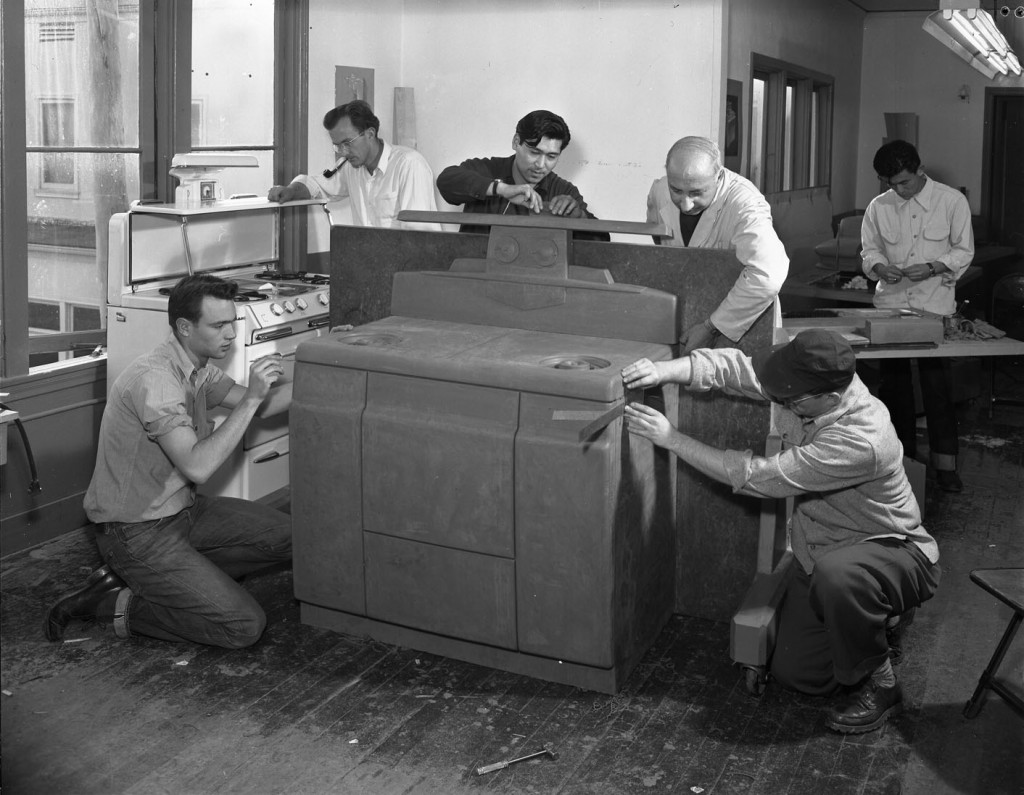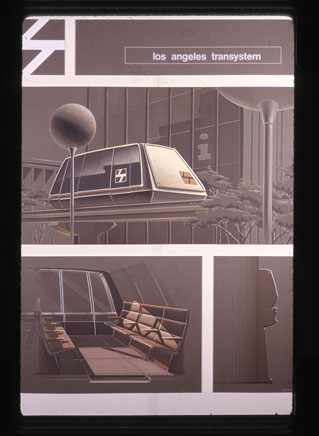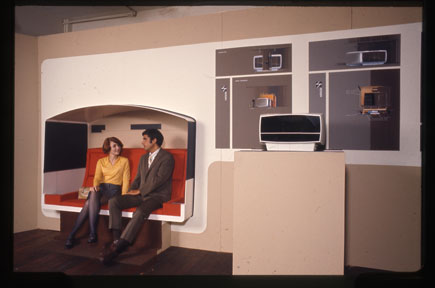Environmental Design
There have been classes in environmental design since the Industrial Design department was formed in 1931. Art Center did not start using the term “environmental design” until the early 1970s, but instead used terms like “interior space design,” design for merchandising,” and “specialized structures.” Today our Environmental Design Department describes the program as “focus[ing] on the design of the total spatial experience—from the first moment of encounter to the last moment of interaction.” Below are some early photographs from classes in environmental design.
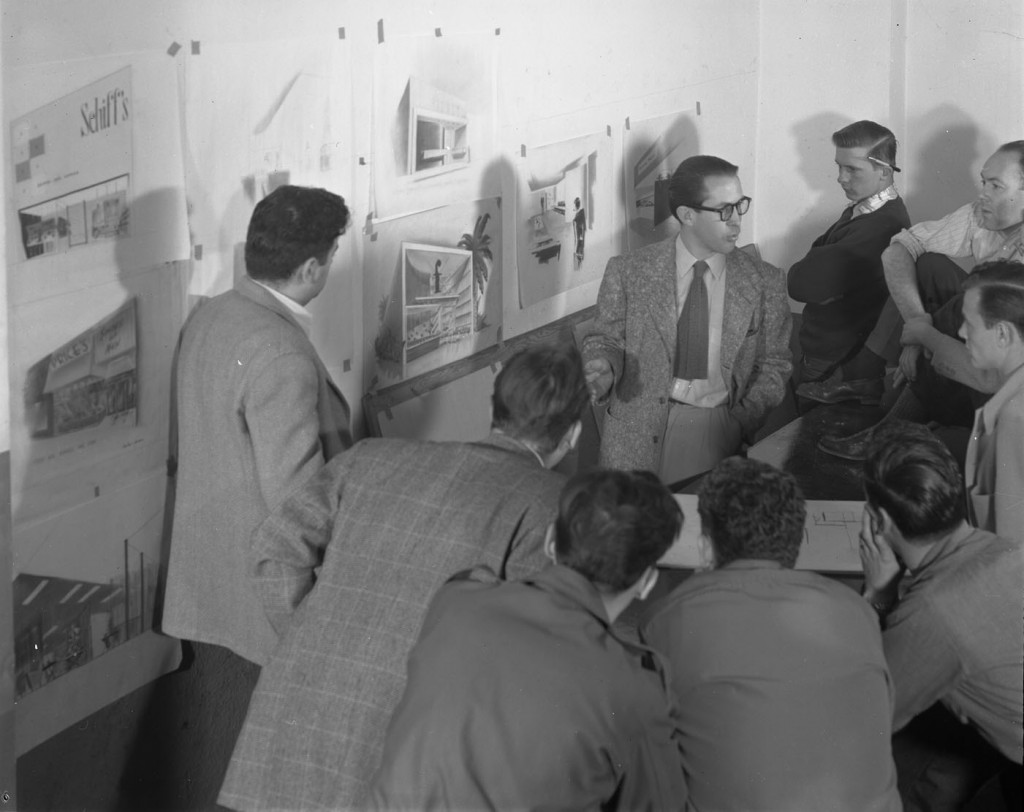
Sterling Leach instructing a group of students, circa 1949. (2004.20.605). Art Center College of Design.
General Electric Space Capsule project, 1960
Art Center’s very first sponsored project in 1960 was not to design an automobile or even an industrial design product, but rather a space capsule. George Beck, manager of industrial design at General Electric’s Light Military Electronics Department, approached Art Center with the idea for students to design a space capsule and interior computer, providing for the most efficient relation between the computer and the pilot.
Below are some photos from the project.
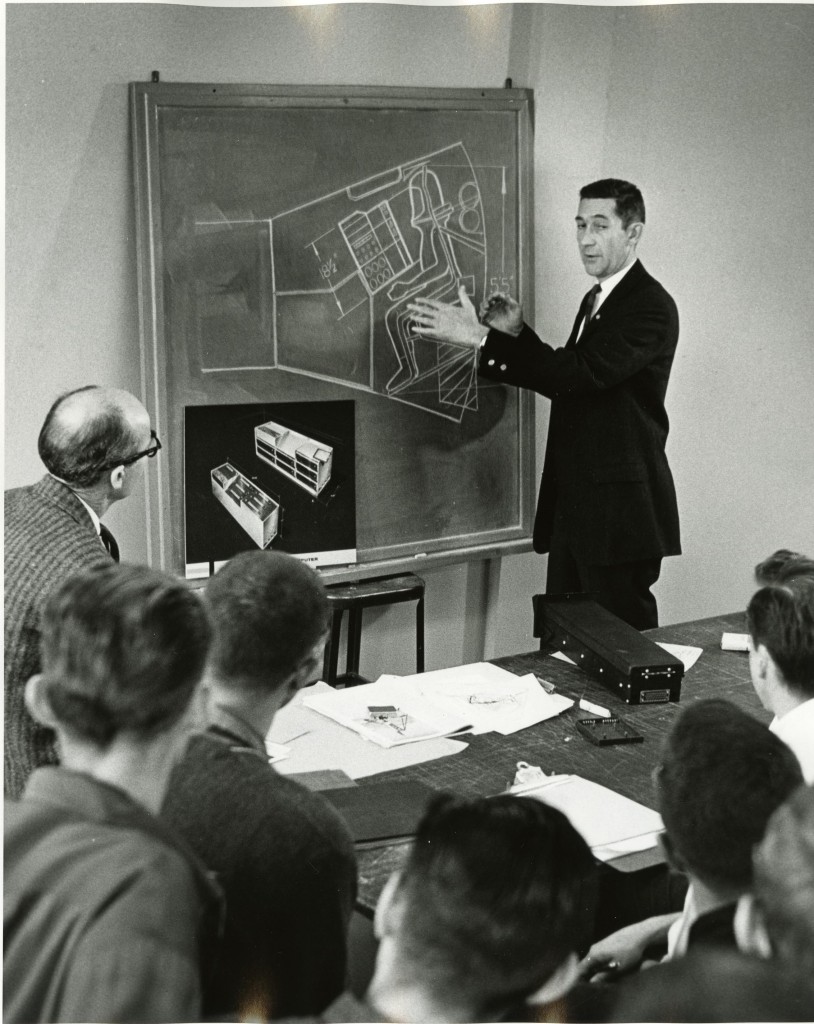
George Beck, of General Electric, giving GE Space Capsule Project assignment to students, 1960. (2004.22.2200.W). Photography by Geoffrey Fulton. Art Center College of Design.
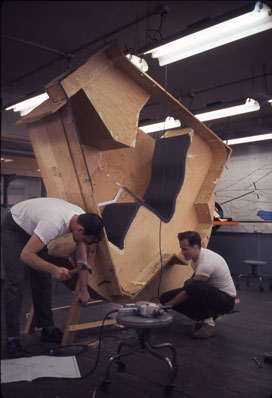
General Electric Space Capsule project, 1960 (2004.22.211). Photography by Geoffrey Fulton. Art Center College of Design.
Early Transportation Design
The first Art Center graduates to enter the automobile design field were placed in positions with General Motor Buick Division in Detroit, Michigan, as early as the mid-1930s. A few industrial design students, including John Coleman, George Jergenson and Strother MacMinn, were fascinated by automobile styling in an era when U.S. mass production car design was still rather primitive. In 1948, MacMinn, Coleman, and Jergenson joined the Industrial Design Department and established the schools’ connection with transportation design–a field that lifted Art Center into international prominence.
Below are some early photographs from circa 1949 of students working on transportation design projects.
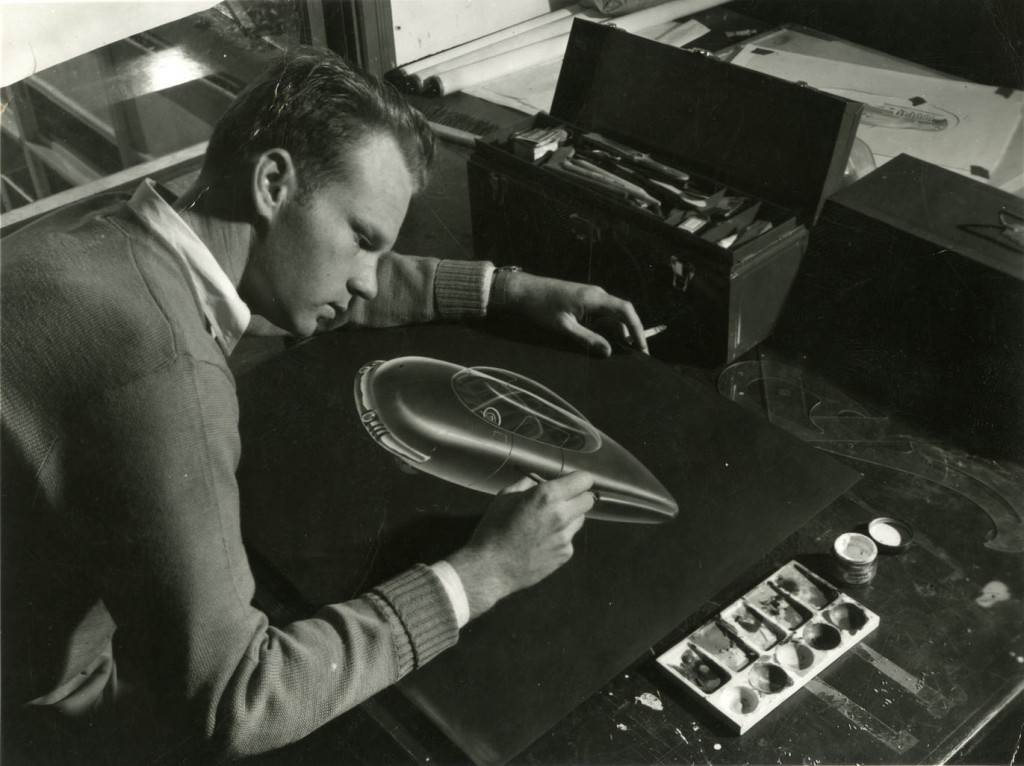
A student completes a color sketch prior to modeling in clay, circa 1949. Art Center College of Design.
General Motors Irvine Project, 1971
Senior design executives from General Motors Corporation challenged a class of advanced transportation students with the design of a total community transportation system projected for the year 1990. The students chose the master-planned 85,000 acre city and community of Irvine in Orange County, California. The problem involved the design of a balanced, integrated system of public, private, emergency, and service vehicles, to meet the needs of half a million people with a wide range of life styles and incomes. The system needed to be attractive, convenient, economical and efficient, and take into account all potential developments in technology, safety and ecological standards.
Below are a few examples of the photo documentation from the project.
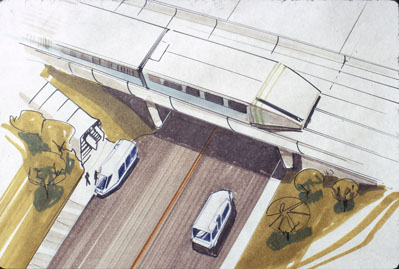
GM Irvine Project, 1971. Student drawing of The Wedge on a ramp with the Irvibus below on a road dropping off passengers. Art Center College of Design.
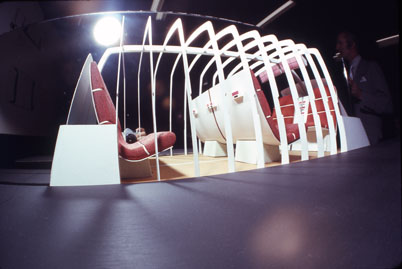
GM Irvine Project, 1971. A model showing the interior of a computrak vehicle. Art Center College of Design.
Catalina Project, 1961
In 1961 Art Center Industrial Design students worked on a project that was prepared for members of the Industrial Design Society of America to be shown at a national convention on Catalina Island. Students designed, built, and then demonstrated for the members five motorized water vehicles. 1) A circular plastic surfboat with a motor in the center, capable of carrying eight people. 2) A motorized water sled with the props above the water. 3) A rescue apparatus for lifeguards. 4) A paddle wheel boat for a child. 5) A 2-passenger 4-wheel drive amphibious jeep.
Below are five images of the saucer vehicle from design and construction to the finished vehicle:
Archivematica and AtoM
A major component of this grant project is to test archival software that will help us preserve and make accessible our digital collections. While one goal of the project is to share Art Center history of industrial design education, another goal is to implement software to better manage our collections.
Artefactual Systems Inc. developed Archivematica and AtoM (Access to Memory), which are both open-source software solutions for managing digital preservation and access. In late October Art Center archives and information technology staff met with consultants from Artefactual Systems, Inc. to install both pieces of software, and we are now testing them with items from the Industrial Design collections.
For years archivists have preserved analog materials by having storage that is temperature and humidity-controlled, using archival enclosures and boxes, and consulting with conservators. For the last several years, a new paradigm for managing digital records was developed dealing with issues such as hardware and software obsolescence, preservation file formats, viruses, and authenticity. It is our goal to develop a strategy to deal with these issues and work at preserving Art Center’s digital materials.
Stove project, 1950
By 1950 the Industrial Design program was well established. The 1950 Art Center catalog states that students, “must be trained to combine imaginative design with technical proficiency. He must understand form, know color and materials, be able to render and draft, must be able to meet and collaborate with architects and engineers on a basis of common knowledge and understanding.” In this project, students are working on a full-scale model of a stove. The instructor in the photograph is model specialist Joseph Thompson who appears in many of the early Product and Transportation Design photographs and worked on the Model A Ford.
Los Angeles Transystem, 1970
Looking ahead twenty years to 1990, the “Los Angeles Transystem” Advanced Transportation Design project taught by Strother MacMinn, involved students looking at the community’s need for new public transportation systems as an opportunity in design evolution. The challenge also meant a broader scope of transportation design thinking and, a chance to demonstrate their employment capability in wider and more versatile fields.
They concentrated on the downtown area of Los Angeles as a focus point for a variety of public systems and the student group then contacted the City Planning Department for help. A final presentation of this project was made to local industrial designers, members of the City Planning Department and executives of Transportation Technology, Inc. This encouraged a steady flow of city planners and transportation designers to visit the project at Art Center. Following that, it was moved to the rotunda of the Los Angeles City Hall and then shown at the office of Home Savings and Loan.
The Art Center Archives has roughly 50 slides documenting the project.
General Motors Turbine Car project, 1960
Art Center has partnered with industry for sponsored class projects since 1960. General Electric, Ford, and General Motors were some of the first businesses to collaborate with Art Center. These class exercises provide students with real world experience related to design and feedback from professionals. A number of the industrial design projects documented in our collections are sponsored, and we will periodically post examples in this blog. Sponsored projects continue today and for information on our current program, under the Educational Partnerships office, click here.
The images below are from the 1960 General Motors Turbine Car project. These images show student Leo Pruneau airbrushing a full scale rendering, and later posing with his final presentation called “Bayonne.”
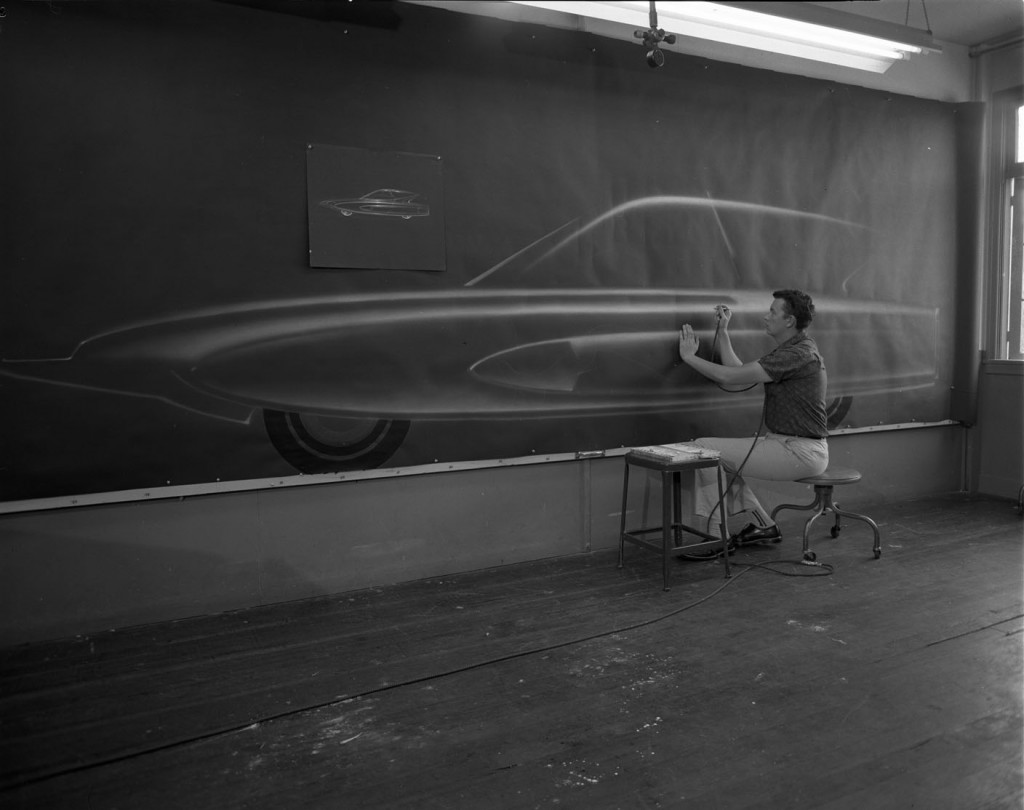
GM Turbine Project. Leo Pruneau (PROD 1961) is working on airbrushing a full scale rendering of a car. 1960 (2004.23.3225) Photography by Geoffrey Fulton.
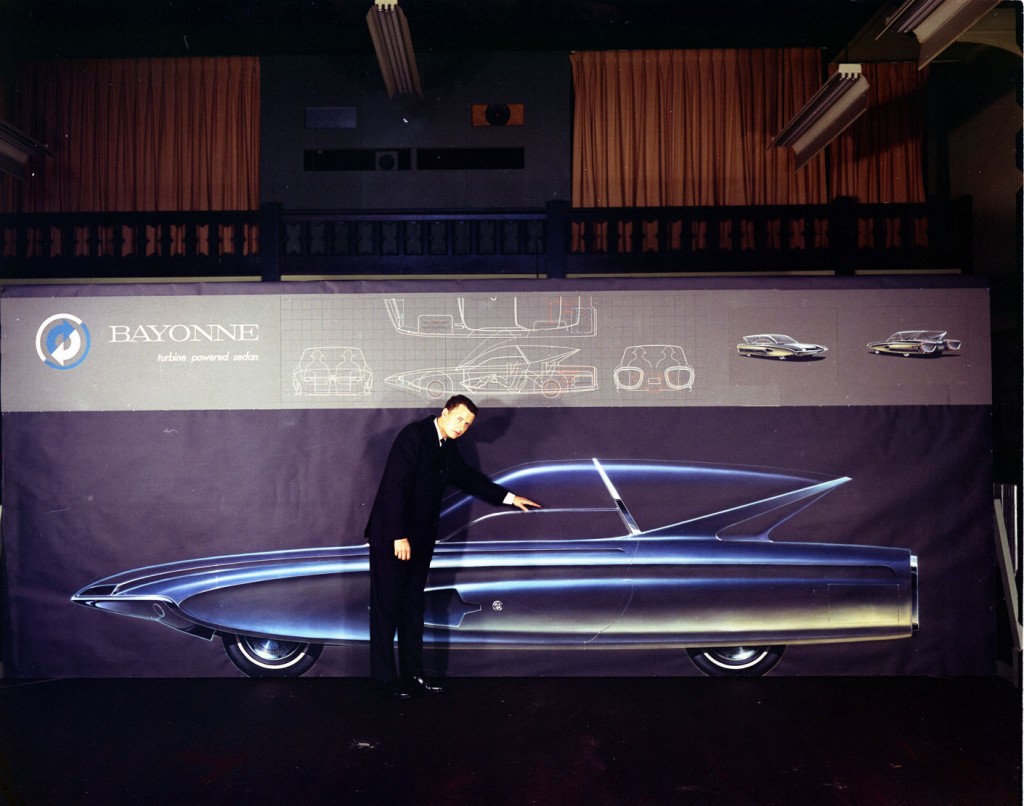
GM Turbine Project. Leo Pruneau (PROD 1961) and his final presentation named “Bayonne”. 1960 (2004.23.3259) Photography by Geoffrey Fulton.
Art Center in Japan, 1956
One significant collection we are processing relating to industrial design is the John Coleman collection, much of which consists of photographs detailing Art Center’s post-war 1956 trip to Japan. Coleman was an alumnus and industrial design faculty member from 1948-early 1970s, and had previously worked at General Motors. As guests of the Japanese Government, representatives from Art Center, including Coleman, alumnus Frank Nakamura, Industrial Design department director George Jergenson, and Art Center President Edward A. “Tink” Adams, traveled to Japan to meet with Japanese designers and report on the state of industrial design. A report was written, which we will be digitizing, entitled The Future of Japanese Industrial Design.”
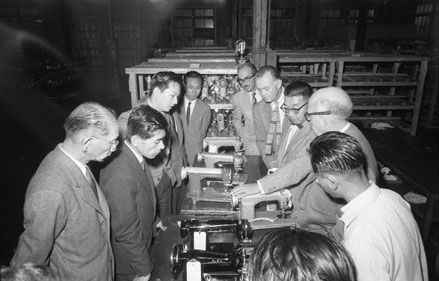
Art Center representatives touring the Juki Sewing Machine company factory floor in Tokyo, 1956, (2004.83.6.2). Photographer unknown. Gift of Carson Pritchard.
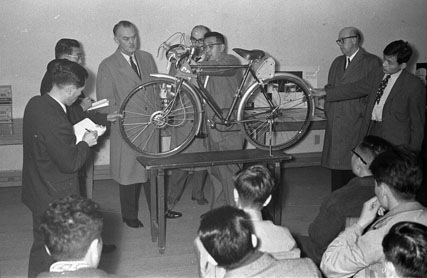
Art Center representatives examining a bicycle during a presentation in Nagoya, 1956, (2004.83.185.10). Photographer unknown. Gift of Carson Pritchard.

